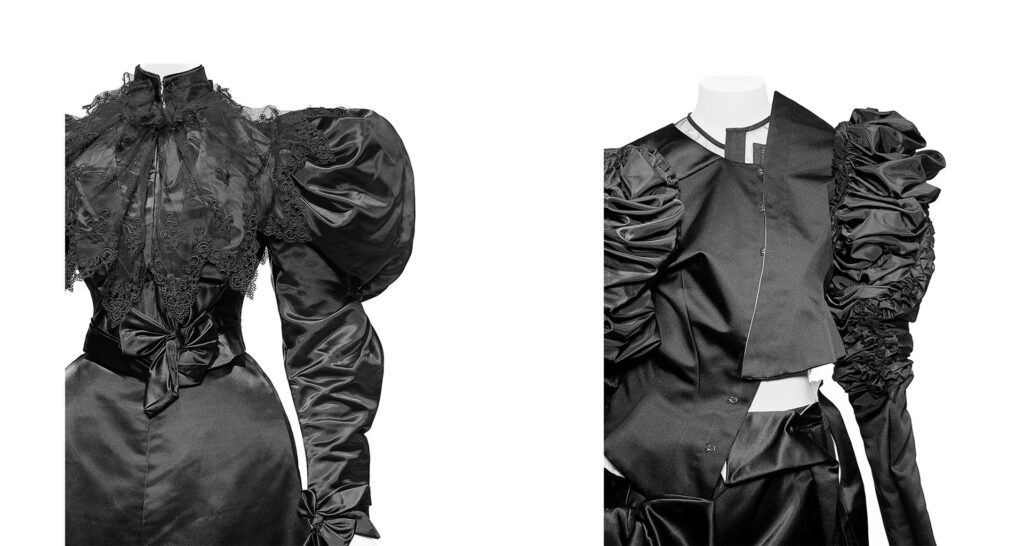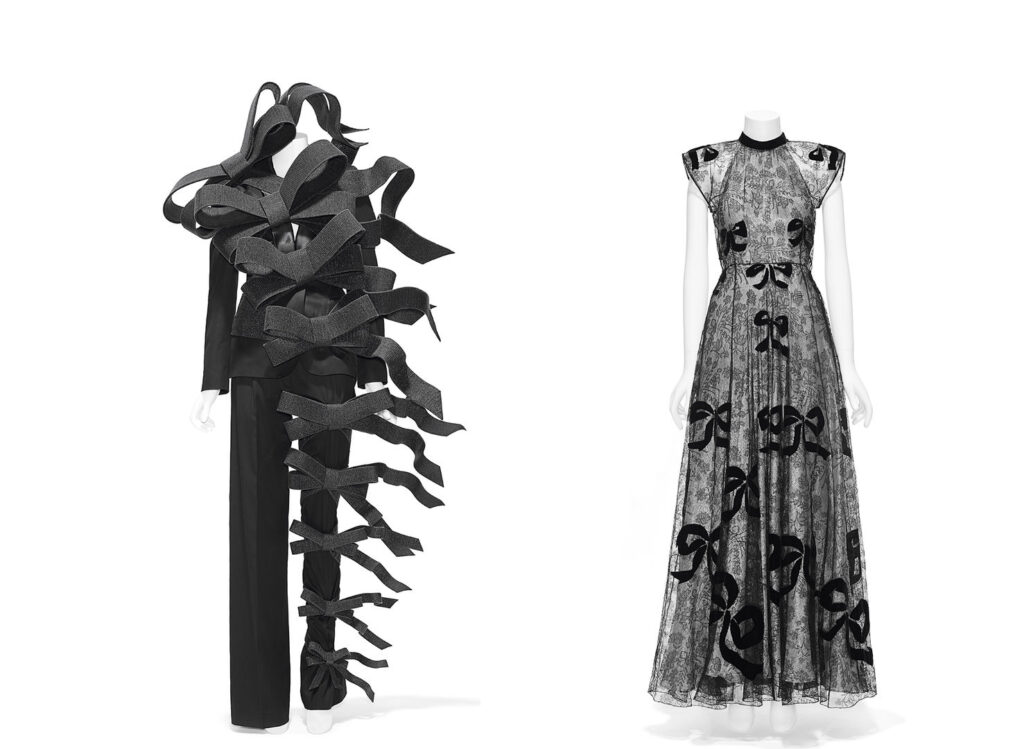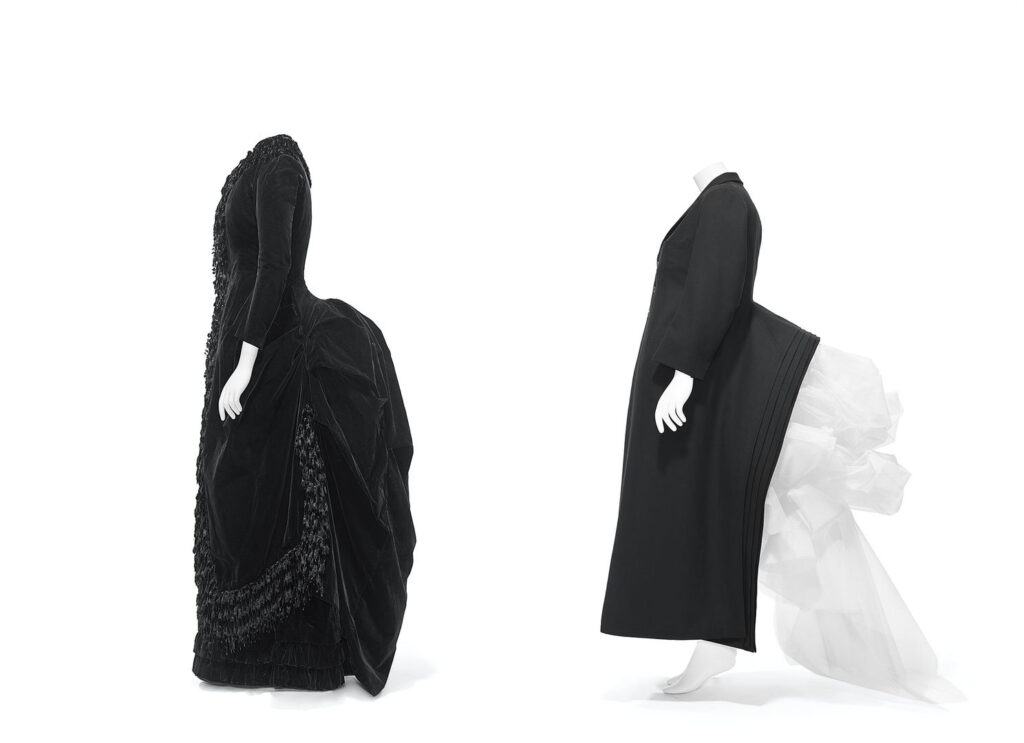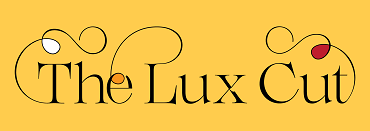The Met’s 2020 Exhibit “About Time: Fashion and Duration”

The Metropolitan Museum of Art Costume Institute’s 2020 exhibit has been postponed since May.
COVID-19 had other plans for the year, so the exhibit was not able to open until October 29. The new exhibit marks the Met’s 150th Anniversary, and the show is meant to reflect the transformation of fashion throughout this time span.

(Right) Interruption: Comme des Garçons (Japanese, founded 1969). Ensemble, fall/winter 2004–5. Gift of Comme des Garçons, 2020
There is a certain irony to the postponement of the exhibit opening given the theme of the show. The exhibit “About Time: Fashion and Duration” uses fashion to draw a connection between past, present, and future. It’s funny this is the angle of the show given the fact that COVID has made this year feel endless. People are isolating at home and the days blur together, so it often feels like time is standing still. The ghost narrator of the exhibit, Virginia Woolf, sums up 2020 perfectly by saying, “An hour may be accurately represented on the timepiece of the mind by one second. This extraordinary discrepancy between time on the clock and time in the mind is less known than it should be and deserves fuller investigation.”
The collection is arranged along two timelines that showcase the linear and cyclical aspects of fashion. The two galleries are laid out as large clock faces and consist mainly of all-black garments. The first timeline follows the linear fashion theme with garments dating from 1870 to 2020 arranged in chronological order. The linear structure showcases the progress of fashion and its transformation. The second timeline, set just behind the linear collection, highlights the cyclical idea behind fashion. Clear parallels can be seen between the two timelines and the juxtaposition highlights how the past and present co-exist.
The other topic of the “About Time” exhibit was on the acceleration of production and consumption within the fashion industry today. Fashion designers are struggling to slow down time and address the issue of overconsumption and overproduction within the fashion industry. In 2017 alone nearly 16.9 million tons of textile waste was generated in the U.S., according to the Environmental Protection Agency. Very little of this was recycled, either, which resulted in more than 11 million tons of textile waste in the landfill.

(Right) Interruption: Madeleine Vionnet (French, 1876–1975). Evening dress, 1939. Gift of Mrs. Harrison Williams, 1952 (C.I.52.24.2a, b)
The exhibit brought attention to the unsustainability of current fashion trends with the last look of the show. While all of the garments throughout the exhibit were black to accentuate changes in silhouette over the years, the last dress on display was a white piece from Viktor & Rolf’s spring/summer 2020 haute couture collection. The white garment and mannequin were suspended off the ground and a halo of white lace surrounded the mannequin’s head. The smock dress was created from upcycled swatches of fabric with a patchwork design in recognition of the scrap material leftover during fashion design. Sustainability and community are two ideas that radiate from this stunning last look as viewers exit the exhibit.
The white garment is a call for a more collaborative and eco-friendly future for the fashion industry. Time will tell whether the fashion industry decides to hear that call.

(Right) Interruption: Yohji Yamamoto (Japanese, born 1943). Coat, fall/winter 1986–87. Purchase, Gould Family Foundation Gift, in memory of Jo Copeland, 2014 (2014.455)







